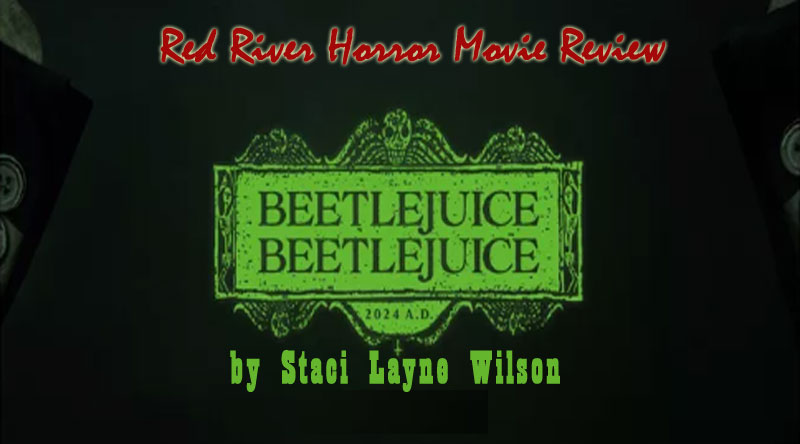Beetlejuice Beetlejuice (2024) | Review
In a world where legacy sequels often feel like reanimated corpses of their former selves, Beetlejuice Beetlejuice emerges from the afterlife with all the charm, weirdness, and morbid humor of its predecessor. Tim Burton, like a cinematic Dr. Frankenstein, has jolted new life into his 1988 creation, proving that sometimes, you can go home again—even if that home is a bureaucratic nightmare realm filled with sandworms and the recently deceased.
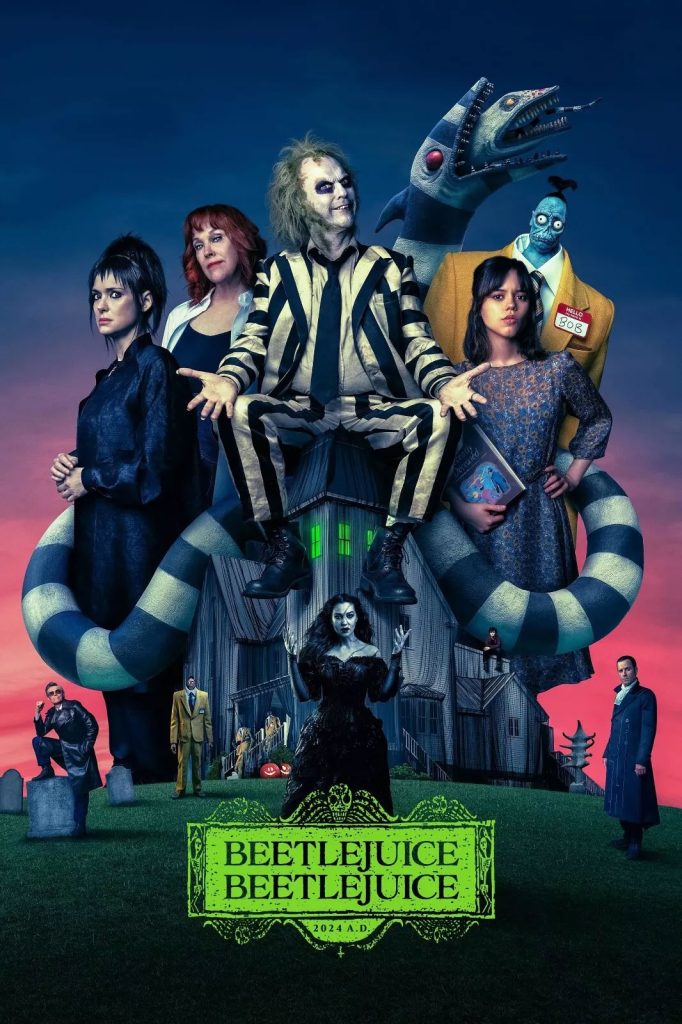
Years after the events of the original film, we find Lydia Deetz (Winona Ryder) has turned her ghostly encounters into a lucrative career as a spectral reality TV host. Lydia’s daughter, Astrid (Jenna Ortega), is the skeptical yin to her mother’s supernatural yang, about as interested in ghosts as a vampire is in tanning lotion.
When Lydia’s father, Charles, shuffles off this mortal coil in a manner that would make Final Destination producers mossy-green with envy, the Deetz clan returns to Winter River. It’s here that Astrid discovers the town’s miniature diorama and inadvertently sets the stage for the return of everyone’s favorite bio-exorcist, Betelgeuse (Michael Keaton).
Meanwhile, in the afterlife, Betelgeuse is running a call center that makes Mondays seem fun and working at Initech look like a dream job. He’s still pining for Lydia and dodging his ex-wife, Delores (Monica Bellucci), a soul-sucking spirit who wears gloriously gothic gowns and plays what previously would have been Lisa Marie’s role (Bellucci and Burton are an item now, so the casting makes sense).
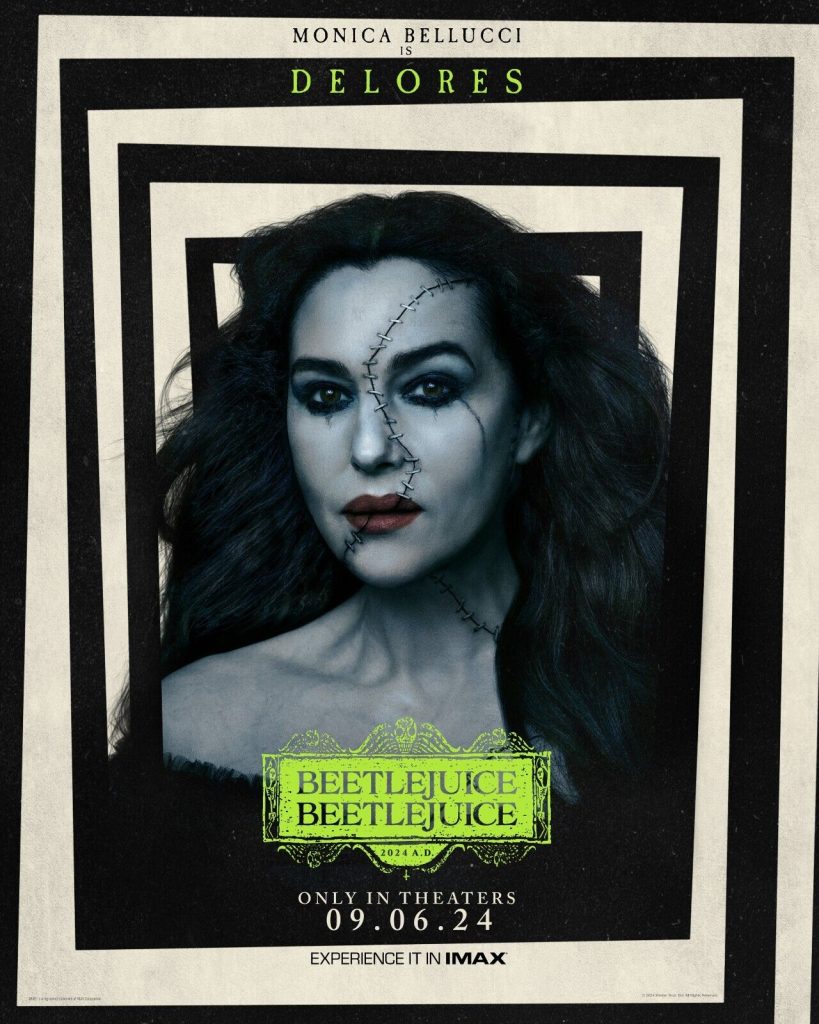
Michael Keaton slips back into the striped suit of Betelgeuse with the ease of a ghost passing through walls. His manic energy and off-color humor are as infectious as a zombie plague, proving that some things, like fine wine and mischievous spirits, only get better with age.
Winona Ryder’s Lydia has matured from angsty teen to… well, angsty adult, but with a TV show. It’s like watching Wednesday Addams grow up to host “Ripley’s Believe It or Not.” Jenna Ortega, fresh from her own Burton collaboration in “Wednesday,” brings a perfect blend of skepticism and hidden vulnerability to Astrid.
Catherine O’Hara returns as Delia, now even more delightfully narcissistic and artistically challenged. Her performance is a masterclass in comedic timing, turning even the flattest lines into laugh-out-loud moments.
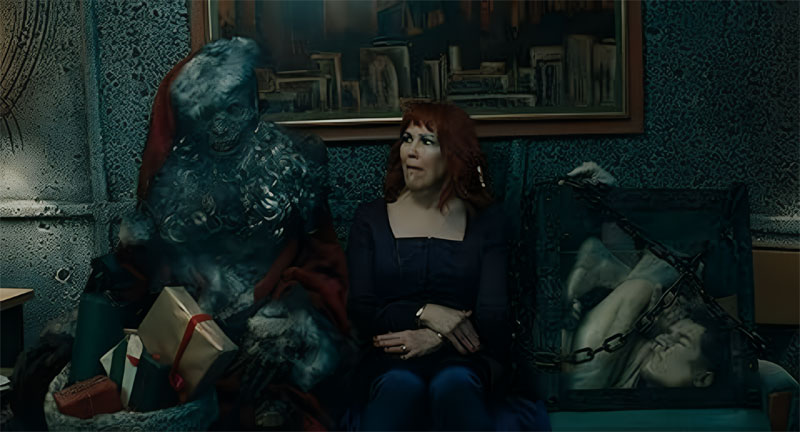
New additions to the cast include Willem Dafoe as Jackson, an afterlife police officer living out his action star fantasies. It’s like watching Norman Osborn decide to become Dirty Harry in the great beyond. Justin Theroux plays Rory, Lydia’s boyfriend and producer, whose New Age earthiness is about as authentic as a three-dollar bill.
Burton has crafted a sequel that feels like a love letter to practical effects and the art of cinematic whimsy. The stop-motion animation sequences and the black-and-white foreign language horror movie pastiche are particular standouts, reminiscent of Burton’s work on Frankenweenie and Ed Wood.
The script, penned by Alfred Gough, Miles Millar, and Seth Grahame-Smith, captures the anarchic spirit of the original while expanding the mythology of the afterlife. The new rules they introduce are about as consistent as the plot of a “Donnie Darko”/ “Back to the Future” crossover, but that’s part of the charm. The Handbook for the Recently Deceased remains as impenetrable as ever, making the DMV look like a model of efficiency. Returning costume designer Colleen Atwood (a Burton go-to since1990s Edward Scissorhands), cinematographer Harris Zamabarloukos (Belfast) and production designer Mark Scruton (“Wednesday”).
Visually, the film is a feast for the eyes, with Burton’s signature gothic aesthetic cranked up to eleven. The indelible images from the original—shrunken heads, jagged hallways of the afterlife—return alongside new, equally memorable creations. It’s like Burton took a heaping spoonful of Edward Gorey, mixed it with a dash of Salvador Dalí, and sprinkled it liberally with Halloween candy.
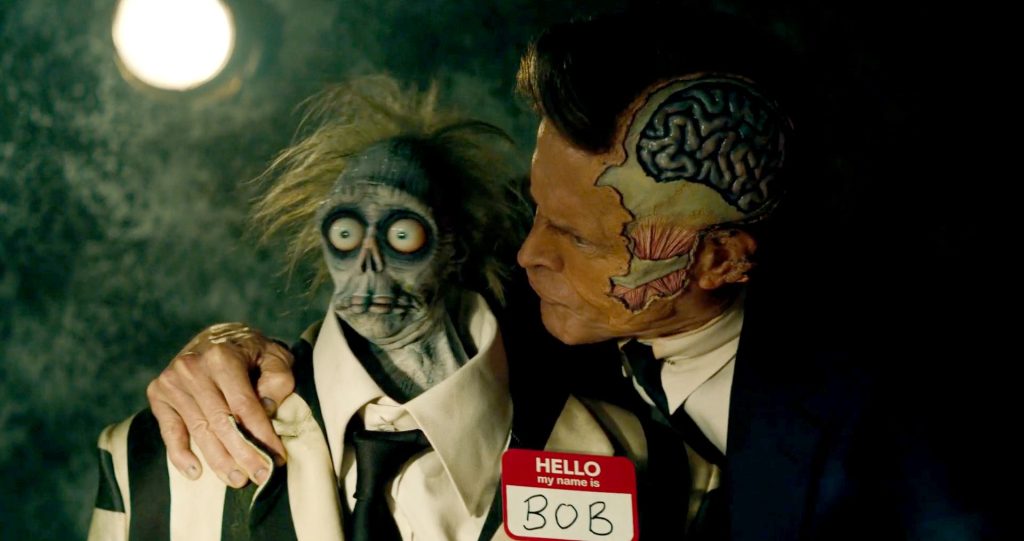
The multiple subplots don’t always gel perfectly, sometimes feeling as disjointed as the limbs of the dearly departed. However, the sheer entertainment value of what’s happening on screen—be it Keaton’s gut-spilling antics, the literal “Soul Train,” or a havoc-wreaking Betelgeuse baby—more than makes up for any narrative shortcomings.
The musical numbers, while not quite reaching the iconic status of “Day-O” from the original, are still a quirky delight. The “MacArthur Park” sequence might not make you jump out of your seat to dance, but it’ll certainly have you tapping your feet… or whatever appendages your ghostly form might possess.
Beetlejuice Beetlejuice is a rarity in the world of long-delayed sequels—a film that manages to capture the essence of the original while carving out its own identity. It’s not perfect, much like the chaotic afterlife it depicts, but it’s a hell of a lot of fun.
For longtime fans, it’s a nostalgic trip back to Tim Burton’s heyday, complete with all the quirky characters and bizarre set pieces you’d expect. For newcomers, it’s a wacky introduction to a world where death is just the beginning of your problems.
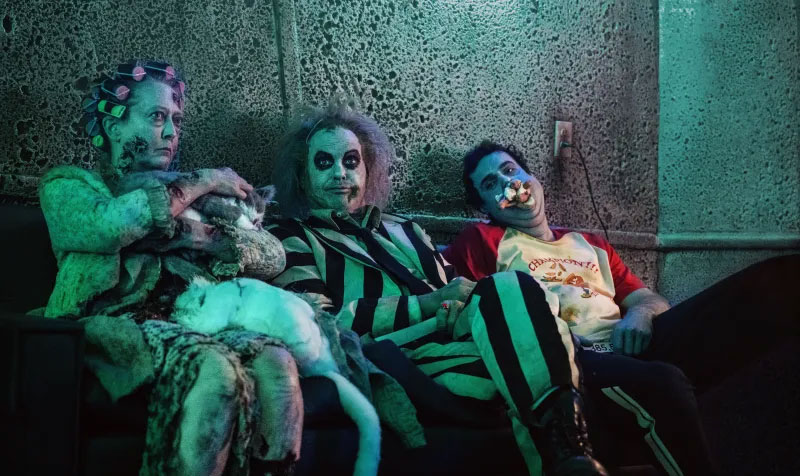
In a cinematic landscape often dominated by soulless remakes and cash-grab sequels, Beetlejuice Beetlejuice stands out like a reanimated thumb. It reminds us why we fell in love with Burton’s twisted visions and proves that sometimes, saying a name twice can indeed bring magic back to life.
So, if you’re looking for a film that’s one part Ghost, two parts The Rocky Horror Picture Show, with a sprinkle of What We Do in the Shadows for good measure, look no further. Beetlejuice Beetlejuice is a spooktacular good time.


